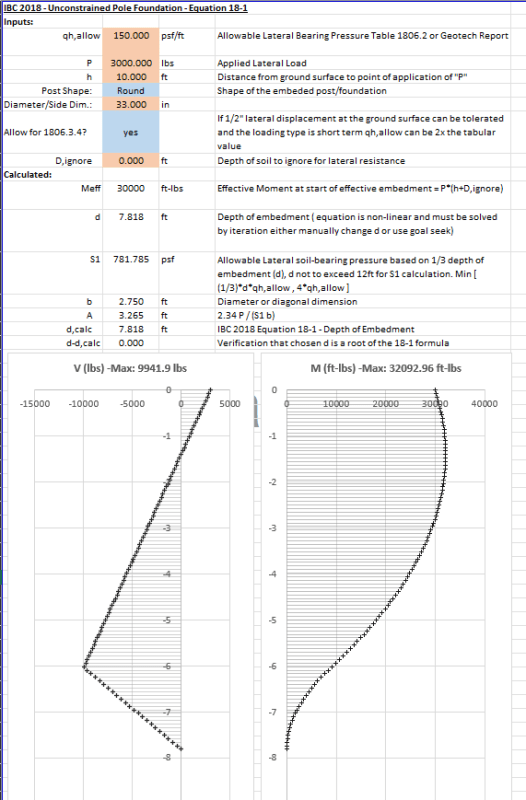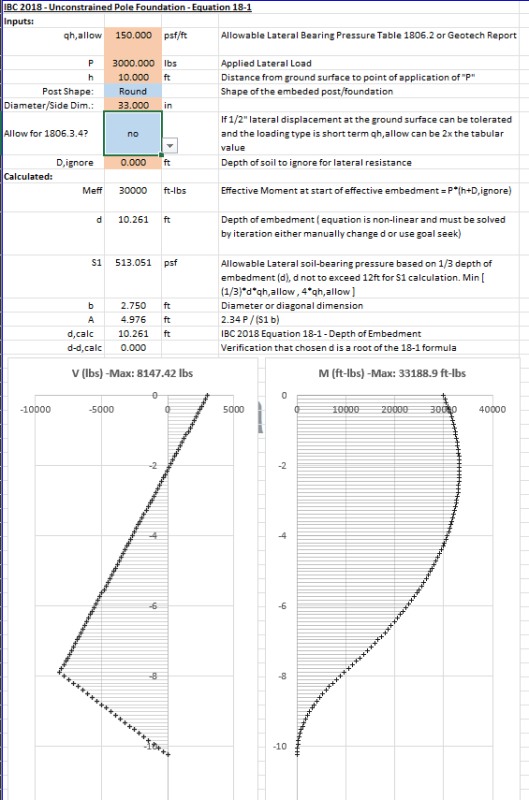Hello,
I am working on a HSS T-Post design that has a 3k lateral point load at the top 10' in the air. Using IBC Table 1806.2 and a lateral bearing pressure of 150psf/ft w/ the 1.33 & 2.0 factors included, I am getting an unconstrained pole size of ~2.75' round x 7' deep.
I would like to be able to justify this as constrained by pouring a slab (t/slab = t/adjacent grade) around the pole. However, I am unsure how big a pad is really needed to justify this. Plan dimension is not really a concern but I need the pad to be ~8" thick or less.
My first thought was to do a quick check using the coefficient of friction 0.35 between the slab and soil (i.e. 0.35 x 6' wide x 9' long x 6" deep x 150pcf = 1420# < 3000# NOT GOOD). However, this seems excessively conservative to me as it basically assumes the lateral restraint a) needs to take out all the lateral from the point load and b) the slab is sitting on top of grade instead of embedded.
I'd appreciate any tips on how to approach this justification and if the code actually gives clarification which I have been unable to find.
Thanks,
Hunter B.
I am working on a HSS T-Post design that has a 3k lateral point load at the top 10' in the air. Using IBC Table 1806.2 and a lateral bearing pressure of 150psf/ft w/ the 1.33 & 2.0 factors included, I am getting an unconstrained pole size of ~2.75' round x 7' deep.
I would like to be able to justify this as constrained by pouring a slab (t/slab = t/adjacent grade) around the pole. However, I am unsure how big a pad is really needed to justify this. Plan dimension is not really a concern but I need the pad to be ~8" thick or less.
My first thought was to do a quick check using the coefficient of friction 0.35 between the slab and soil (i.e. 0.35 x 6' wide x 9' long x 6" deep x 150pcf = 1420# < 3000# NOT GOOD). However, this seems excessively conservative to me as it basically assumes the lateral restraint a) needs to take out all the lateral from the point load and b) the slab is sitting on top of grade instead of embedded.
I'd appreciate any tips on how to approach this justification and if the code actually gives clarification which I have been unable to find.
Thanks,
Hunter B.


